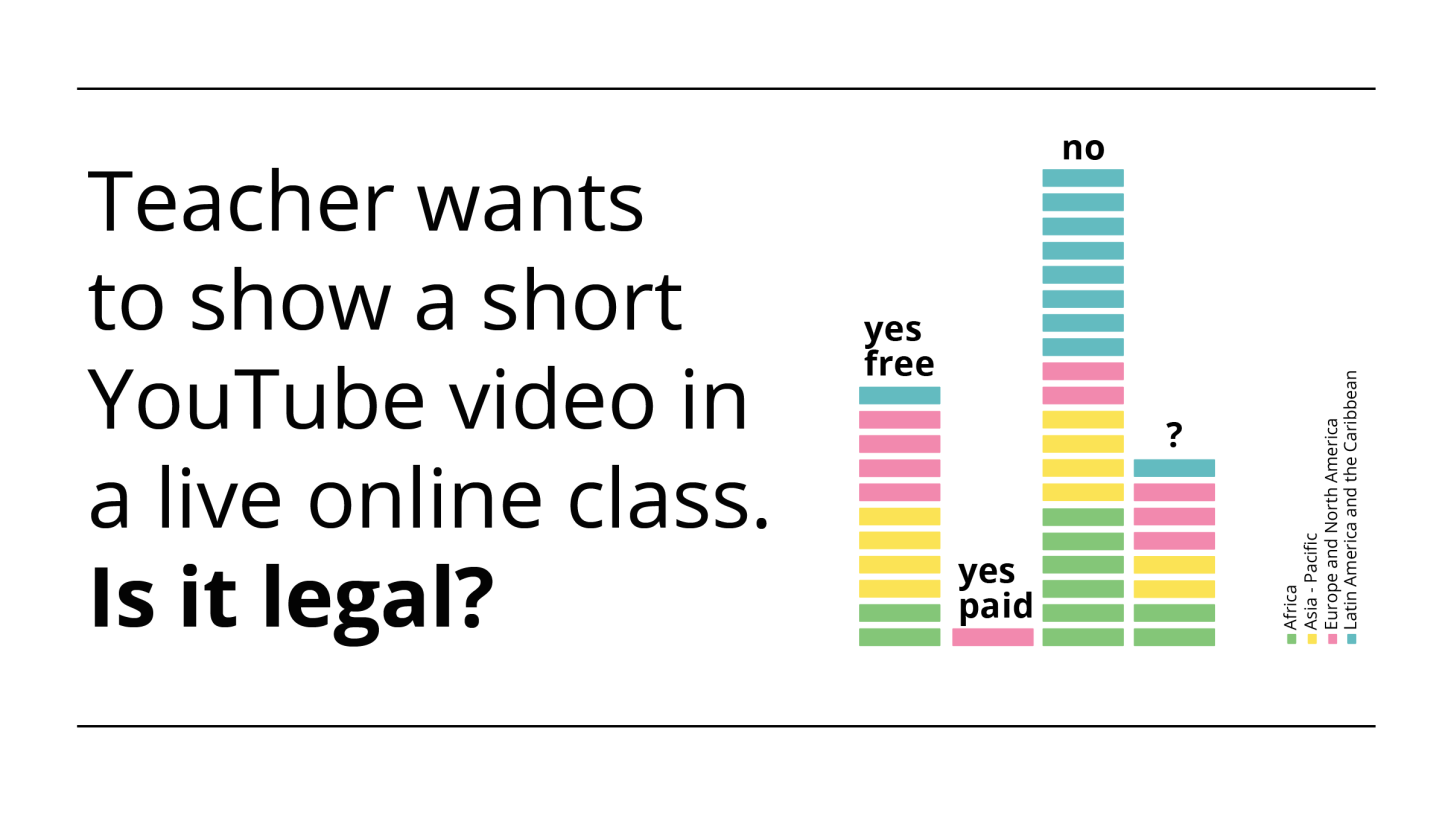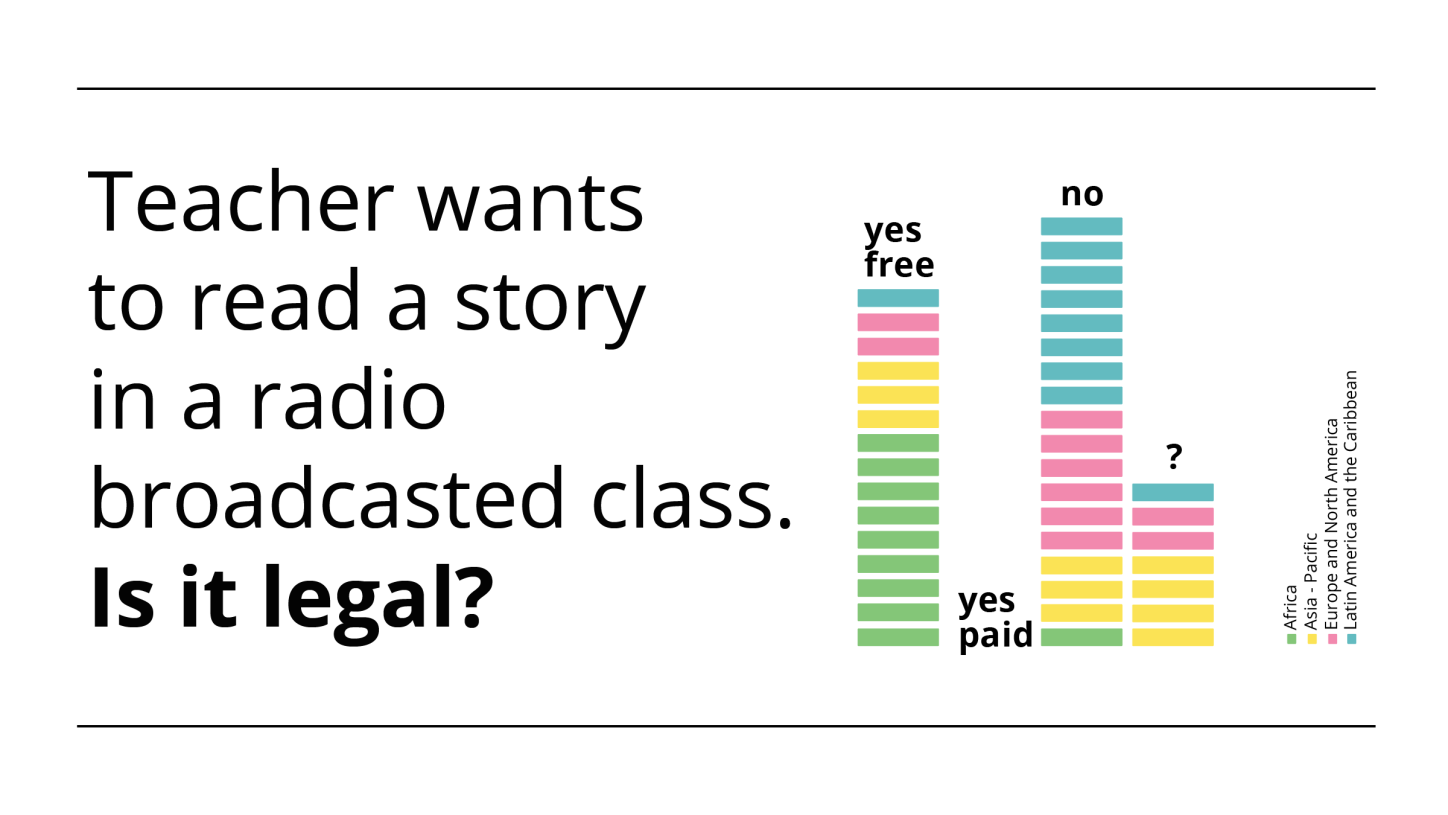Teresa Nobre, Reposted from Education International, Link (CC-BY-NC)
Access to knowledge is an important aspect of the right to education. In order to respond to the needs in the classroom, teachers often complement traditional teaching resources (e.g., textbooks and other curated materials) with a wide spectrum of materials from a variety of sources (e.g., short videos, images, articles). These are often protected by copyright and related rights [1].
Recognising the essential public mission of education as well as the right of teachers to choose and adapt teaching materials without having to ask permission from the copyright owner, governments are putting in place so-called copyright exceptions and limitations for education. Unfortunately, the COVID-19 pandemic and the massive shift to remote education during school closures has highlighted, more than ever before, that those exceptions and limitations are not always fit for teaching in the digital age.
Is it Legal? Education and Copyright in the Digital Age analyses 10 digital and remote teaching and learning scenarios that involve the use of copyrighted materials and other protected materials under the laws of 40 countries in Africa, Asia-Pacific, Europe and North America, and Latin America and the Caribbean.
This study’s findings indicate that, in many countries, current copyright laws prevent the use of copyrighted materials in remote educational activities (e.g. live-streamed online or radio-broadcasted classes) and in on-demand digitally-supported education (e.g., emailing or storing reading materials on a school’s platform). This forces teachers to either refrain from using such materials or to work in legal grey zones.
Where are we now?
Here are some of the patterns and trends identified in the study, which illustrate the inequalities between the regions and can provide guidance for copyright reform efforts:
- Countries with general and flexible “fair use” provisions and countries with broad and technologically neutral exceptions are better equipped to facilitate remote and digitally-supported education. The majority of these countries are located in Europe and North America. Educators and students from Africa and from Latin America and the Caribbean and, to a lesser extent, Asia-Pacific, are particularly disadvantaged, as their copyright laws are not as fit for the digital age.

This scenario illustrates the digital copyright divide well. In contrast to countries in the Global North, countries in Latin America and Africa in particular do not perform well in this scenario. They do not permit distance communication/sharing of protected materials.
- International instruments for mandatory exceptions (e.g. the mandatory quotation exception in the Berne Convention), internationally agreed model laws for exceptions (e.g. the model education exception in the Tunis Model Law on Copyright for Developing Countries), as well as regional instruments for mandatory exceptions (e.g. the mandatory digital and cross-border education exception in the new EU Copyright Directive) play an important role in reforming national copyright laws.

This scenario illustrates the role played by international model laws. In Africa, in contrast to other regions, most legal frameworks are supportive of uses of protected materials made during radio-broadcasted classes. This is because most have been influenced by the educational exception model contained in the 1976 Tunis Model Law, which specifically exempts “the utilization of a work by way of illustration in … broadcasts”.
- Teaching collaborations, online courses and other activities that involve the use of protected materials between students and teachers located in different countries remain a challenge. Educational cross-border activities are only regulated within the EU and exchanges of protected materials beyond EU borders is not possible.
Recommendations to overcome the digital copyright divide
As the world is dramatically “off track” in terms of achieving the Sustainable Development Agenda for Education, it will be essential for governments to take action now:
- Governments should substantially reform their national copyright laws, to ensure that they have flexible and broad educational exceptions in place that stay relevant as innovation advances and regardless of the means of teaching and learning. Otherwise, education communities across the world will be burdened with narrow educational exceptions that will ultimately undermine quality teaching and learning in a digital and online environment.
- Copyright reform should be undertaken in consultation with teachers and their representatives to ensure that it supports teaching and learning.
- Research on digital and remote educational practices that investigates how teachers are working with materials and what challenges they are facing can provide important insights for copyright policy makers.
- International soft laws and models are an important vehicle in the process of reaching an international consensus on binding instruments and in assisting countries in reforming their copyright laws to adapt their educational exceptions to digital and remote settings.
- Policy makers should make an effort to agree on an international binding instrument to ensure that the education community can enjoy a minimum set of rights to use copyrighted and other protected materials for educational purposes everywhere. This will substantially reduce the legal uncertainty and risks posed to educators, learners, and other participants of educational activities, including in a cross-border environment.
- Legal solutions for cross-border educational uses should be explored, at bilateral and multilateral levels, to deal specifically with certain cross-border uses of protected materials for educational purposes that are essential for education communities.
The full research paper by Nobre, T. (2022) can be found here : https://eiie.io/3PdfYEW
The summary of the research can be downloaded here: https://eiie.io/3LX8FyU
Note:
[1] “Copyright” refers to exclusive rights granted to the author of a work; “Related rights” refer to exclusive rights granted to certain categories of people (e.g., performers such as actors and singers, producers of sound recordings and films, broadcast organisations) in respect of the materials they produce.




